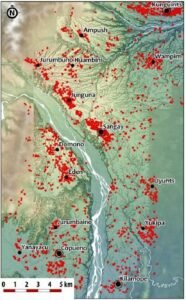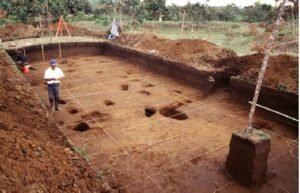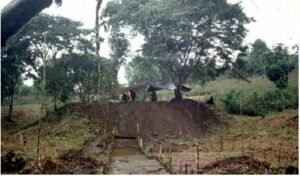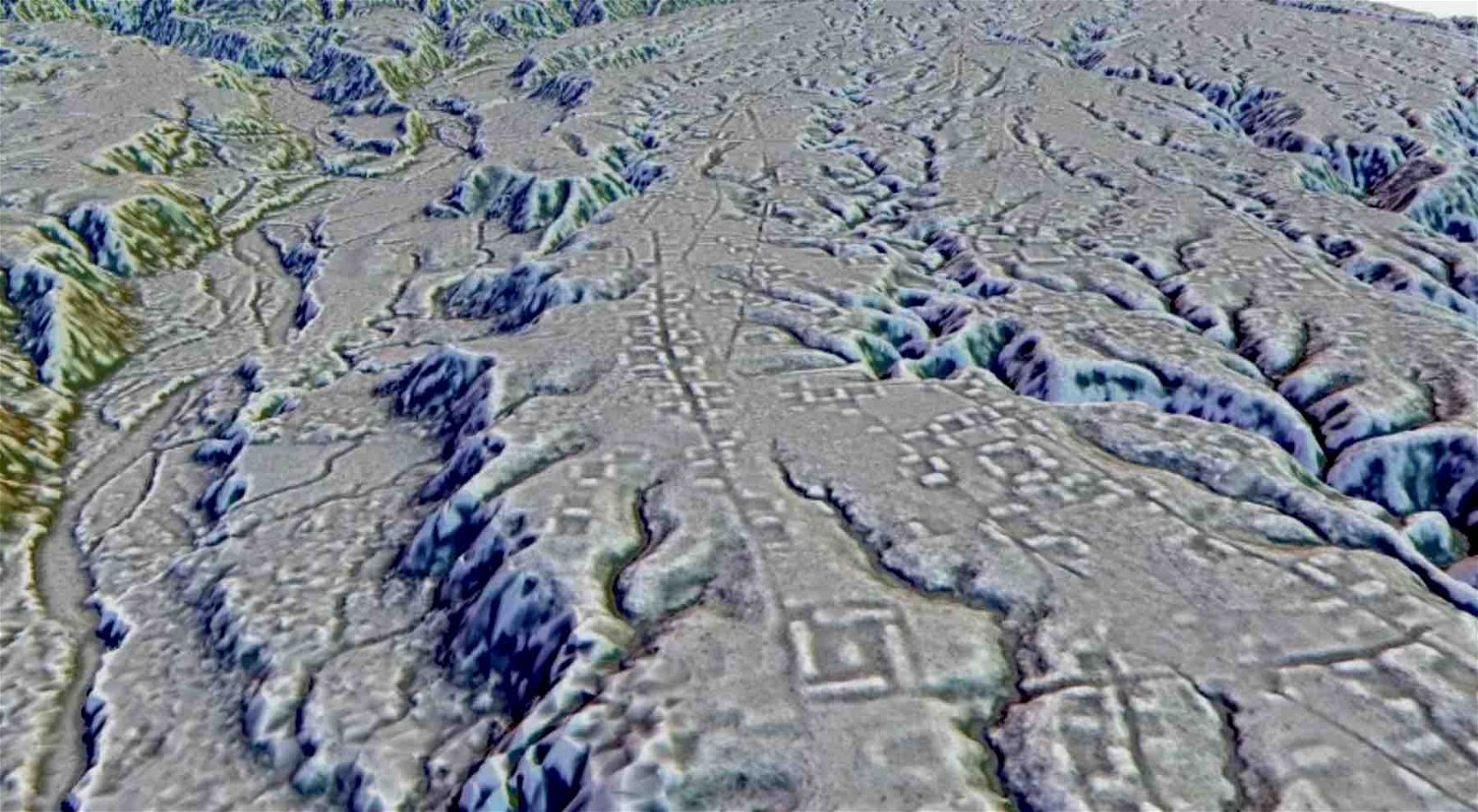A team of archaeologists reports the discovery of a complex network of ancient roads hidden deep within the Amazon, used by their ancient builders to connect constructed platforms and other structures at least 1000 years earlier than other known complex Amazonian societies.
Based on the complexity and reach of the network, the researchers say it is likely evidence of an extremely advanced society rivaling early Mayan settlements in Mesoamerica.
Evidence for ‘Large Scale Urbanism’ in Ancient Amazon
Archaeologists have known for some time that ancient pre-Hispanic settlements likely lay hidden deep within the Amazon. However, the dense rainforest has made the discovery of these ancient cultures and their artifacts particularly difficult. In fact, the release announcing this latest discovery openly concedes that although an expanding body of research has begun to shed light on the scope and scale of pre-Hispanic occupation of the Amazon, “evidence for large-scale urbanism has remained elusive.”
Now, research scientist Stéphen Rostain from the Archaeology of Americas and the French National Center for Scientific Research (CNRS) and his colleagues say they have discovered conclusive and expansive evidence for an agrarian-based civilization that started at least 2,500 years ago in the Upano Valley of Amazonian Ecuador, a region in the eastern foothills of the Andes.


“Based on more than 20 years of interdisciplinary research, (the findings) suggest that this original 2,500-year-old society constitutes the earliest and largest low-density agrarian urbanism documented in the Amazon thus far,” they explain.
Platforms, Plazas, and a Massive Network of Ancient Roads
In their research, which is published in the journal Science, Rostain and his colleagues describe the painstaking efforts and spectacular findings they discovered hidden within the Amazon. This included fieldwork and light detection and ranging (LIDAR) analysis, revealing an “anthropized landscape with clusters of monumental platforms, plazas, and streets following a specific pattern intertwined with extensive agricultural drainages and terraces as well as wide straight roads running over great distances.”
The team also found evidence of more than 6,000 anthropogenic rectangular earthen platforms and plaza-like structures that were connected by a series of footpaths and roads. This network was surrounded by “expansive agricultural landscapes” and additional river drainages hidden within the 300 square kilometer survey area. In all, the team says they found evidence for 15 separate settlement sites of varying sizes.


While this is all significant evidence of previously undiscovered long-term settlements hidden deep within the Amazon, with many dating back to 500 BCE, the researchers say they found a “complex road system extending over tens of kilometers, connecting the different urban centers.” According to their analysis, such extensive early development in the Upper Amazon “is comparable to similar Maya urban systems recently highlighted in Mexico and Guatemala.”
Likely Builders of Ancient Roads Identified
Archaeological excavation conducted at the site has identified the Kilamope and later Upano cultures as the likeliest builders of the network of ancient roads. Still, the researchers note that there are some unexpected differences between this site and later sites made by these two cultures. The most prominent is the fact that this network of ancient roads and the overall site constructions appear to be more advanced than more recent sites.
“Previous efforts have described mounds and large monuments in Amazonia,” explains Sacha Vignieri, the editor of their study, “but the complexity and extent of this development far surpasses these previous sites.”


Ultimately, the researchers say that the finding is obviously historically significant since it reveals societal complexity in the Amazon that has been guessed at but remained hard to prove. However, they also note that the discovery of pre-Hispanic advanced cultures highlights advancements made before Europeans came to the region.
“Such a discovery is another vivid example of the underestimation of Amazonia’s twofold heritage: environmental but also cultural, and therefore Indigenous,” the researchers write. “We believe that it is crucial to thoroughly revise our preconceptions of the Amazonian world and, in doing so, to reinterpret contexts and concepts in the necessary light of an inclusive and participatory science.”
Christopher Plain is a Science Fiction and Fantasy novelist and Head Science Writer at The Debrief. Follow and connect with him on X, learn about his books at plainfiction.com, or email him directly at christopher@thedebrief.org.

